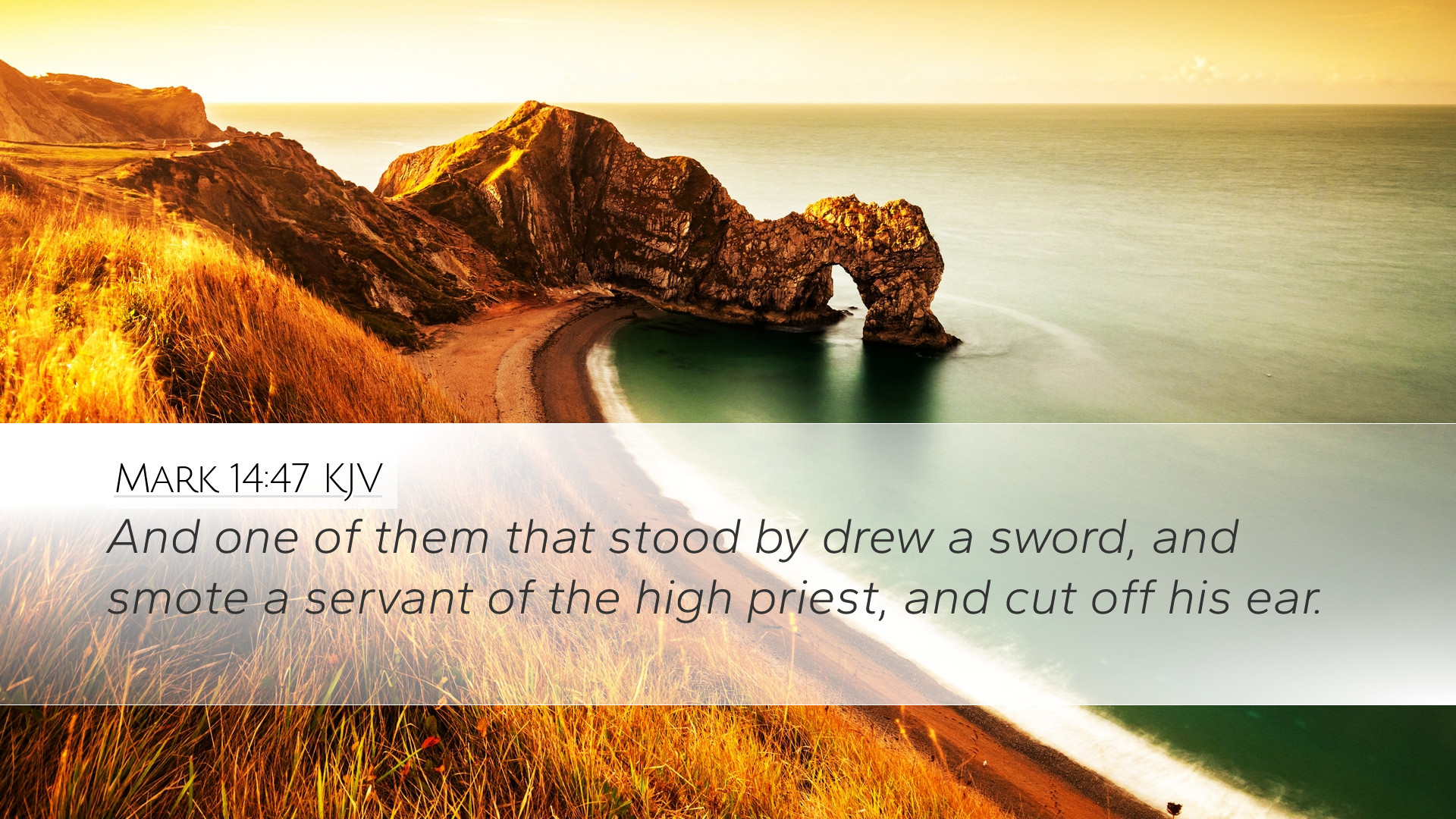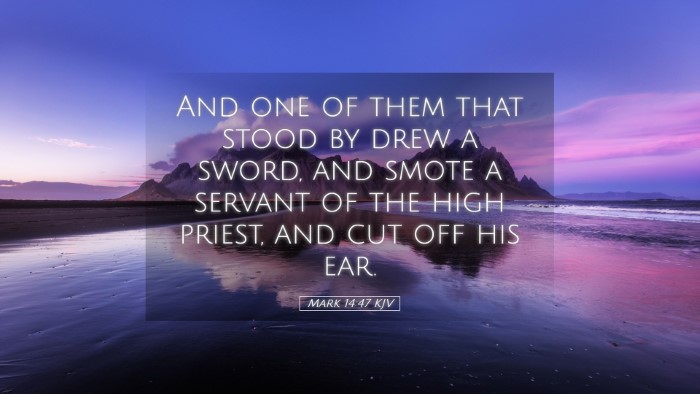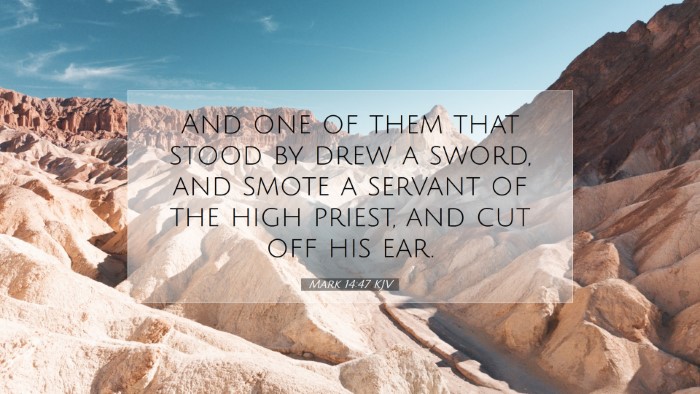Commentary on Mark 14:47
Mark 14:47 states: "And one of them that stood by drew a sword, and smote a servant of the high priest, and cut off his ear." This verse presents a pivotal moment in the narrative of Jesus' arrest, demonstrating both the intensity of the situation and the impulsive nature of human actions.
Contextual Analysis
The events leading up to this moment are crucial for understanding the significance of this act of violence. Jesus had been in the Garden of Gethsemane, praying earnestly. After His prayer, Judas Iscariot arrived with a cohort of soldiers and officers from the chief priests, marking the betrayal of Christ. This context lays the foundation for the violent response from one of His followers.
Commentary Insights
-
Matthew Henry:
Henry highlights the impetuosity of the disciple who drew the sword, indicating that the act was one of desperation and misplaced zeal. He notes that while the disciple's intention may have been to protect Jesus, the action was misguided and counterproductive, showing a profound misunderstanding of Jesus' mission and the nature of His kingdom.
-
Albert Barnes:
Barnes emphasizes the identity of the high priest's servant, recognizing that this servant, Malchus, was an innocent bystander caught in the tumult of the arrest. He reflects on the symbolism of the ear being cut off, suggesting that this act of violence represents a deeper spiritual truth: the inclination of mankind to respond with force rather than seeking divine intervention or understanding.
-
Adam Clarke:
Clarke provides a detailed reflection on the disciple's action. He points out the historical context that such a response was typical in a time of heightened conflict. Clarke also observes the prophetic implication of this event, indicating that the violent reaction serves as a foreshadowing of the trials that Jesus would face and the greater conflict between good and evil that was unfolding.
Spiritual Lessons
This verse teaches several important lessons for pastors, students, theologians, and Bible scholars:
-
The Dangers of Impulsive Action:
The reaction of the disciple illustrates the dangers of acting out of haste or passion. In moments of crisis, believers are called to seek God's guidance rather than resorting to violence or rash decisions.
-
The Call to Nonviolence:
This incident emphasizes Jesus' teachings on nonviolence and forgiveness. Instead of supporting the violent act, Jesus responded with healing, exemplifying His call to love enemies and seek peace.
-
The Nature of True Discipleship:
This moment reveals the complexity of being a disciple of Christ. True discipleship involves understanding and following Jesus’ example of sacrificial love, even in the face of opposition. It challenges followers to assess their motivations and reactions in times of distress.
Theological Reflections
From a theological perspective, this event signifies the larger battle of good versus evil that pervades the entire narrative of the Bible. The act of violence reflects humanity's struggle with sin, while Christ’s peaceful demeanor during His arrest symbolizes divine grace and the ultimate victory over sin and death.
Conclusion
Mark 14:47 serves as a profound reminder of the human propensity towards violence and the need for divine guidance. It encapsulates a moment of tension that leads to the fulfillment of Scripture, where Jesus' commitment to His mission is tested. As pastors and scholars delve into this passage, they are called to reflect on their own responses to crisis and to embody the principles of Christ's teachings — advocating for peace, understanding, and love in the face of adversity.


